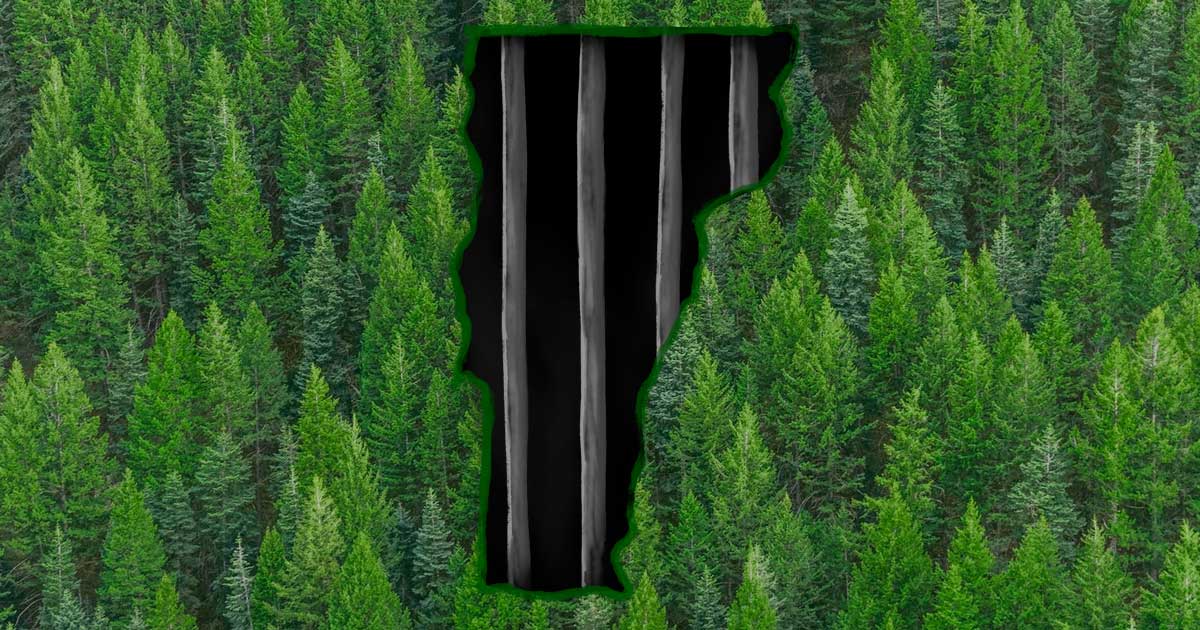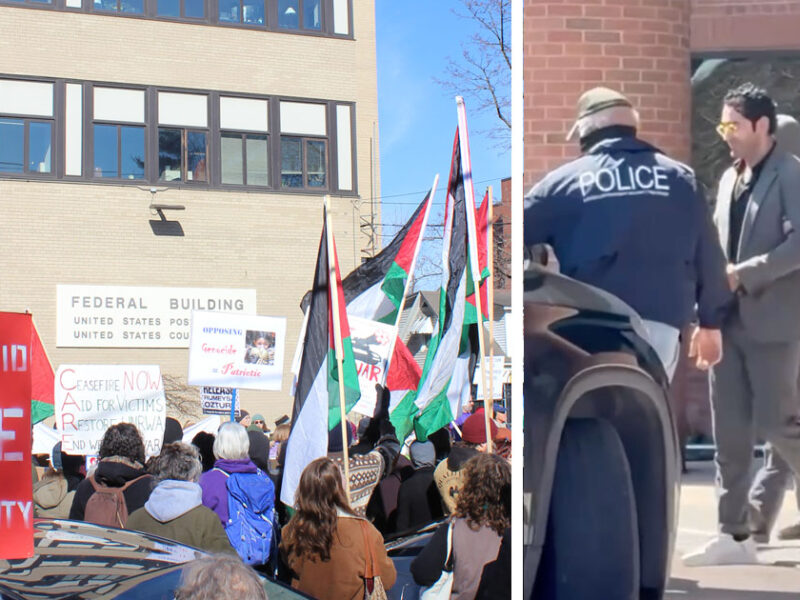In light of a civil lawsuit filed last month on behalf of seven youth formerly lodged at Woodside Juvenile Rehabilitation Center in Essex, The Rake Vermont will be releasing a series of articles about the now-defunct children’s prison. The first of these will look at the history of Woodside and its context in our community.
Woodside was originally established in 1984 in response to the 1981 rape and assault of two twelve-year-old girls that resulted in the death of one of the victims. Under Vermont law at the time, those under 16 were tried as children and freed at age 18, with their record expunged. While one of the perpetrators in the 1981 crime was 16 at the time and has remained in jail for forty years (his last review for parole eligibility was in 2018), the other perpetrator was only 15 at the time of the incident. When the public learned that he would walk free on his 18th birthday with his record expunged, the state legislature reacted in draconian fashion.
Rather than viewing the attack and murder as a horrible but anomalous event, sensationalist media and conservative fear mongering reinforced the idea that a multitude of children who had commited crimes were slipping through the cracks of justice. A special session of the Vermont legislature was called in 1981, and laws were introduced that for certain crimes lowered the age a child can be tried as an adult to 10 years old. Three years later, in 1984, Woodside Juvenile Rehabilitation Center was completed and ready to hold children for years at a time.
Since then, trying children as adults has remained common practice in Vermont. A report issued in 2020 by the nonprofit Human Rights for Kids ranked Vermont in the second-lowest tier for how well it protects the human rights of children in the justice system, asserting that Vermont “has made minimal efforts to protect the human rights of children in the justice system and should take immediate action to improve and implement its laws.”
Throughout the world and the United States, imprisonment was not the primary form of punishment until the nineteenth century. Instead, punishment tended to involve the implementation of shame, pain, or death before a crowd. Through the work of progressive reformers, particularly Pennsylvanian Quakers, imprisonment itself was seen as a way to rehabilitate people who commit petty crimes. Like many reforms, the reform itself turned into a punishment.
The idea that the punishment for a crime needs to correspond to an arbitrary amount of time imprisoned continues to pervade modern thought, tied to the capitalist link between time and money. If time is money, and a person is incarcerated for a period of time, they have not only lost their freedom, but they have been denied the opportunity to earn money and participate in the market. As the sociologist Max Weber wrote in The Protestant Ethic and the Spirit of Capitalism, the “duty of the individual toward the increase of his capital…is assumed as an end in itself.” An individual who is incarcerated is unable to increase their wealth. To a capitalist, there is no worse punishment: it is a social and economic death.
Angela Y. Davis writes in Are Prisons Obsolete? that prisons function “ideologically as an abstract site into which undesirables are deposited, relieving us of the responsibility of thinking about the real issues afflicting those communities from which prisoners are drawn in such disproportionate numbers.” When Woodside was created, a huge opportunity to address root causes of juvenile crime was lost. Instead of adopting a restorative approach or seeking to support affected communities, Vermont legislators complied with the demands of a reactionary, retributive public and effectively agreed to hide children behind bars rather than confront these issues.
Woodside was constructed expressly as a juvenile detention facility: surrounded by tall fencing topped with razor wire, to enter was to be completely cut off from the outside world. Youth living at the facility were locked in their tiny cinder block cells on the East or West Unit at night and at different points during the day. They were escorted by staff from room to room when not in their cells. The third unit, the North Unit, consisted of isolation and seclusion rooms for youth experiencing acute symptoms of mental illness. Youth who were lodged at Woodside often had complex trauma histories from which mental health symptoms ensued, and the North Unit was frequently used to keep these youth in seclusion.
There is a professional consensus about use of force against children that states that restraint and seclusion should only be used to prevent imminent harm against the child, and that if used, the measures should be ended as soon as possible. Professional guidelines also state that restraint and seclusion may only be ordered by a medical doctor or, if one is unavailable, by an authorized qualified person and then reviewed by a medical doctor within one hour of the order. At Woodside, there was no medical doctor reviewing these orders, and children were regularly held in seclusion in Woodside’s North Unit for weeks or months at a time.
A 2011 report submitted to the Vermont legislature by then-DCF Commissioner David Yacovone details an initiative to classify Woodside as a psychiatric residential facility rather than a detention center. If successful, the initiative would allow Woodside to begin receiving federal Medicaid funding for services rendered to youth within its walls. Various policy changes were enacted at Woodside, including the addition of more training for staff as well as individualized treatment plans for youth. As required by Vermont Medicaid law, Woodside sought and was awarded accreditation from the Commission on Accreditation of Rehabilitation Facilities (CARF) in 2011. This allowed Woodside to begin billing Medicaid for services and receiving federal funding.
Five years later, in 2016, Woodside lost the roughly $2.6 million in annual Medicaid funding because the federal government perceived it as a detention facility housing inmates, and the federal government does not fund state prisons. For the next two years DCF tried to meet the federal requirements needed to regain the Medicaid funding essential for running Woodside (whose annual operating budget was roughly $6 million). This pursuit was abandoned in 2018 when Woodside once again failed to meet the necessary criteria. The federal government saw Woodside for what it was: a facility where children were locked away, overpowered, and subjected to state violence.
From there, conditions for youth at Woodside continued to deteriorate until it was ultimately permanently closed on October 17, 2020. Woodside is currently slated for demolition to allow for the construction of a new mental health facility for adults that will be built on the site.
At the time of its closure, 11 employees (over a third of Woodside’s staff) were under investigation for misconduct. Mere months before, in April 2020, the state had settled a lawsuit filed by Disability Rights Vermont over the treatment of youth at Woodside in which the state agreed to ensure the safety of children in their care.
Although the physical building will be razed, the legacy of Woodside will continue to haunt its victims.
The second installment of this series will detail the accusations and investigations brought against Woodside in recent years as well as the efforts the state is making to open another locked facility for children in Vermont.



